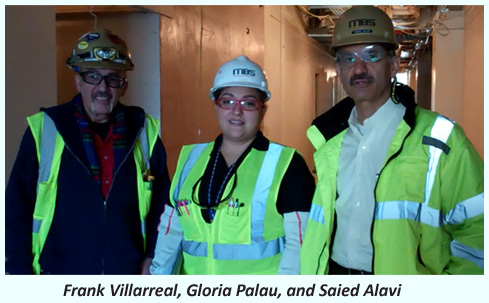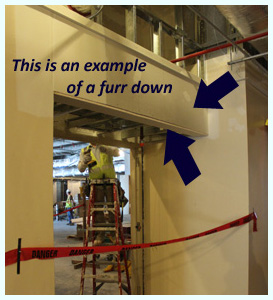 Authored by Elizabeth McPherson and originally published on ConstructionCitizen.com.
Authored by Elizabeth McPherson and originally published on ConstructionCitizen.com.
A few weeks ago, Saied Alavi, Director of Operations at Marek Brothers Houston, and I visited an active construction site on the University of Texas Medical Branch at Galveston (UTMB) campus. The new Jennie Sealy Hospital is scheduled to be completed later this year and open for patients early next year. We went there to talk with Gloria Palau, one of Marek’s workforce trainees, to learn about her experience with Marek since she entered her new career about a year ago. Frank Villarreal, Safety Advisor for the project, met us at the check-in trailer, and walked us onto the site to the floor where Gloria was working that day.
I began by asking Gloria how she had learned about the career opportunities at Marek. She explained that her brother had told her that through the training program at Marek, she would have an opportunity to learn about several different departments to then get an idea of which type of work she liked and wanted to learn more about. Her brother had not worked at Marek himself, but had heard about Marek’s workforce development program through word of mouth from friends and relatives.
Before coming to Marek, Gloria had been working two jobs: as a worker in an office and also as a corrections officer for the Texas Department of Criminal Justice (TDCJ) at a state prison. Her schedule with TDCJ was four days of work followed by four days off, so she worked at the office job on the days she was not working for TDCJ. When TDCJ told her that they were transferring her to a different facility, she started looking for another job because she didn’t want to drive the longer commute to work or move her family from their house in Houston, and she was dissatisfied with her work at her office job. She wanted to look for “something different.” After hearing about the opportunities at Marek from her brother, she became determined to give construction a try.
Saied asked her what was the very first thing she learned on her first day with Marek. She smiled as she replied:
“Safety. You have to go through the safety orientation before you step on the jobsite, because that is our number one priority. You want to go home the same way you came in that morning. There are people waiting for you at home – even if it is the dog who needs to be fed.”
Saied then asked how her training began. Gloria said she was assigned by the foreman to a coach who then showed her how to do the work, such as how to take measurements and how to read the blueprints. She thought this type of hands-on training was fantastic.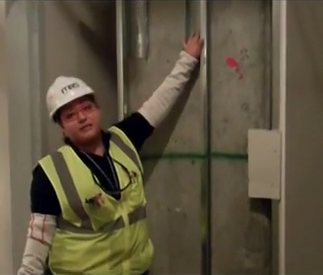 Gloria joined the drywall department and began work on the UTMB hospital’s 7th floor where we were now standing. She proudly pointed to the walls and said that when she began working “none of this was here.” She explained that her team started from the bottom, beginning by framing the walls.
Gloria joined the drywall department and began work on the UTMB hospital’s 7th floor where we were now standing. She proudly pointed to the walls and said that when she began working “none of this was here.” She explained that her team started from the bottom, beginning by framing the walls.
Saied and I wanted to know what Gloria most loved about working in construction. She explained that she was a “hands-on” person who did not enjoy working in an office. Growing up, she was encouraged to work in an office rather than in a physical job because she was female, but recently she had decided to work in a job where she could do something physical and literally build something.
Saied asked her what gives her the most satisfaction about what she does every day, and she said it was seeing others recognize that she really is good at her work. Gloria said:
“They don’t just see me and say, ‘Oh she is a girl so she doesn’t know how.’ On the contrary. They say ‘Man, she knows how to work!’”
Saied asked Gloria if she found joy when looking at what she has built. This caused her face to light up with pleasure and pride as she talked about walking through aisles whose walls were not there in the first weeks she worked on the site, and which she herself had helped create.
Gloria has received on-the-job training in several specific areas of framing and drywall. While related in concept, each has its own different specifications to learn. Gloria can already frame walls to prepare for drywall, install drywall, and frame ceilings and furr downs.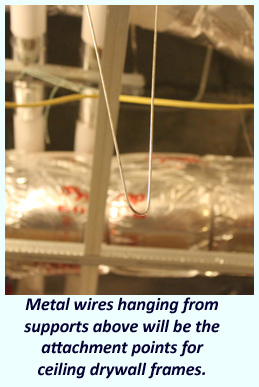 Through Marek’s workforce development program, Gloria has also taken a class in basic blueprints, a tool class which familarized her with the tools used in her new trade, and completed her CPR training and her 30-hour OSHA course. She still plans to take another office training offered in advanced blueprints reading. She has become certified to evaluate safety protocals, so she helps safety advisor Frank Villarreal check that the proper PPE is being used throughout the large project, having Frank check her work after she performs each evaluation and before the evaluation sheet is signed. With workers on every floor, there are many things to check for proper procedure and equipment – for example, making sure the proper scaffold is used depending on what type of job is being done.
Through Marek’s workforce development program, Gloria has also taken a class in basic blueprints, a tool class which familarized her with the tools used in her new trade, and completed her CPR training and her 30-hour OSHA course. She still plans to take another office training offered in advanced blueprints reading. She has become certified to evaluate safety protocals, so she helps safety advisor Frank Villarreal check that the proper PPE is being used throughout the large project, having Frank check her work after she performs each evaluation and before the evaluation sheet is signed. With workers on every floor, there are many things to check for proper procedure and equipment – for example, making sure the proper scaffold is used depending on what type of job is being done.
I asked her what she would say to someone who is working in an office but is not happy. Someone who is a hands-on type of person like herself. She said to give construction a try!
Gloria said: "We have different departments. We have finishing, we have [mecho] shades, we have ceilings. Give it a try, and you will feel free [unlike] a little bird caged in an office. That is how I feel about it.”
Saied asked her what her career goals were as she looks ahead in her life. She said she would like to become a leadman or a safety advisor or maybe a coach. She wants to be able to help and teach someone else the things she has learned. Saied asked if she saw a ceiling in this industry beyond which it would be impossible for her to go. Gloria’s answer was no, and that in fact, unlike her previous job in the office which definitely had a restricting level for advancement, in the construction industry she did not feel that. She said “Here, there is no limit. As long as you have the dedication and the will to come and do your job, you can move up to whatever position you like.”
When Saied asked Gloria about her expressed interest in safety and also in becoming a foreman, he mentioned that those two goals go hand in hand. Gloria agreed:
“As a foreman, you are responsible for your people. You have to make sure your co-workers (I call them ‘my guys’) are protected all of the time.”
When Saied asked Gloria about her perception of the construction industry before she began this job and after, she had a very interesting answer.
Saied: What was the image you had of construction before you started work at Marek? Did you think it was a professional job?
Gloria: No, I really did not think it was a professional job. That is why when I came here, [the work] opened an invisible door that I did not know was there. You can make this a career.
Saied: Do you consider this to be a career?
Gloria: Yes! If you like it, it’s not a short-term job, because right now you are a worker, but later on you could have people working for you, like I said, as a foreman. Or teaching – you could be a coach teaching some new trades [to those] who come in. 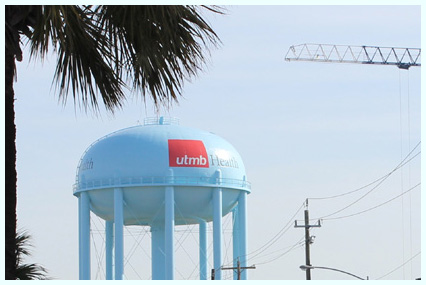 Gloria: It is always beautiful to know a trade – to know how to build something. Because if anything goes [wrong], you will always have something to support your family – to fall back on and support your family. It’s beautiful.
Gloria: It is always beautiful to know a trade – to know how to build something. Because if anything goes [wrong], you will always have something to support your family – to fall back on and support your family. It’s beautiful.
When I asked Gloria to explain what she meant by the phrase “the invisible door,” here is what she said:
“People think it is like [construction workers] are people who don’t have knowledge and that they just work physically – but it is not like that. People think that you just stop here – you know, if you are a worker, then you are just a worker.”
When Saied asked Gloria “What do you tell people when they ask ‘What do you do?’”, her pride was evident as she exclaimed:
“They don’t believe me! And I always say ‘I’m a Sheetrocker! I’m a Framer; I’m a ‘Rocker – I’m both. And I’m proud of it – I’m proud of being a sheetrocker. I tease my other trades like ‘I’m not no finisher –’ or ‘I’m not no electrician – I’m a sheetrocker! I work hard!’ You know, I like it.”
Then right away she brought up safety. “I always keep in mind that I’ve got three people who are waiting for me at the end of the day. There are three people that I need to hold, carry, run with, chase after – so I need to run, keep my legs, keep my arms, keep everything. And I need to see them grow, so I need to keep my eyes safe – everything. Safety is first. Even above liking [the work], safety is first.”
When Gloria decided to join the drywall department at Marek, she was looking for “something different.” She knew her new job would be nothing like her previous employment. She expected to be happier working in a “hands-on” job. Yet she discovered a marvelous surprise. She never expected to find the opportunities for career advancement which are abundant in the construction industry. In talking about what working for Marek and in the construction industry has been like, she said:
“I think it opened the door to something; it opened an invisible door that I didn’t know was there.”
Are you like Gloria whose vision has been blocked by a closed “invisible door” of misperception regarding career opportunities in the construction industry?
You can watch excerpts from this interview in the 9½ minute video below.
Bonus video: If you want to see Gloria talk shop, watch this 1½ minute video of her describing some of the work she does.
